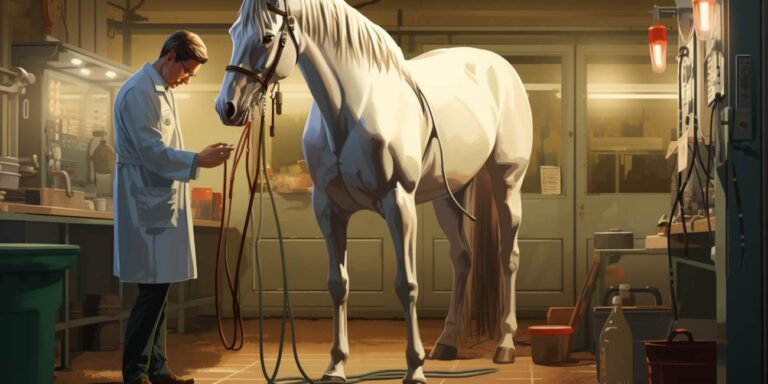If you’re a horse owner, you understand the importance of keeping your equine friend healthy and happy. Cushing’s disease, also known as pituitary pars intermedia dysfunction (PPID), is a common endocrine disorder that can affect horses, particularly those in their middle to senior years. This condition can lead to a range of health issues, including weight loss, muscle wasting, and a compromised immune system. However, with proper treatment and management, you can help your horse live a comfortable and fulfilling life. In this article, we’ll delve into the various aspects of how to treat Cushing’s disease in horses.
Understanding cushing’s disease in horses
Cushing’s disease is caused by a dysfunction of the pituitary gland, leading to the overproduction of certain hormones, most notably adrenocorticotropic hormone (ACTH). This hormonal imbalance can have far-reaching effects on your horse’s health, including:
- Abnormal hair growth and shedding
- Increased thirst and urination
- Muscle wasting
- Laminitis
- Weight loss
- Immune system suppression
Recognizing the signs of Cushing’s disease early is crucial for effective treatment. A veterinarian can diagnose the condition through blood tests and clinical evaluation.
Treatment options for cushing’s disease
Once your horse has been diagnosed with Cushing’s disease, your veterinarian will work with you to develop a tailored treatment plan. While there is no cure for Cushing’s disease, the goal of treatment is to manage the symptoms and improve your horse’s overall quality of life. Here are some common treatment options:
1. medications
Veterinarians often prescribe medications like pergolide or trilostane to control hormone levels and alleviate clinical signs. These medications are typically administered daily in the form of tablets or liquid.
2. dietary management
Managing your horse’s diet is crucial. A diet low in sugars and starches can help prevent laminitis and maintain a healthy weight. Consult with your veterinarian or equine nutritionist for a suitable diet plan.
3. regular exercise
Providing your horse with regular, low-impact exercise can help maintain muscle mass and overall fitness. Consult your veterinarian for an exercise plan tailored to your horse’s condition.
4. routine veterinary care
Regular check-ups with your veterinarian are essential to monitor your horse’s progress and adjust the treatment plan as needed. Blood tests may be conducted periodically to assess hormone levels.
Faqs about cushing’s disease in horses
Q1: can cushing’s disease in horses be cured?
A1: Unfortunately, there is no cure for Cushing’s disease in horses. Treatment focuses on managing symptoms and improving the horse’s quality of life.
Q2: is cushing’s disease more common in older horses?
A2: Yes, Cushing’s disease is more commonly diagnosed in horses that are middle-aged or older, typically over the age of 15.
Q3: can i prevent cushing’s disease in my horse?
A3: While you can’t prevent Cushing’s disease, you can reduce the risk of laminitis and other complications through proper management, including medication, diet, and exercise.
Q4: are there any alternative therapies for treating cushing’s disease?
A4: Some horse owners explore alternative therapies such as herbal supplements, acupuncture, or homeopathy. However, it’s essential to consult with your veterinarian before pursuing any alternative treatments to ensure they are safe and effective.
Conclusion
Dealing with Cushing’s disease in horses can be challenging, but with the right treatment plan and ongoing care, you can help your equine companion lead a comfortable and fulfilling life. Remember to work closely with your veterinarian to monitor your horse’s progress and make necessary adjustments to the treatment plan. By providing proper care and attention, you can give your horse the best chance at managing Cushing’s disease.
See also:





